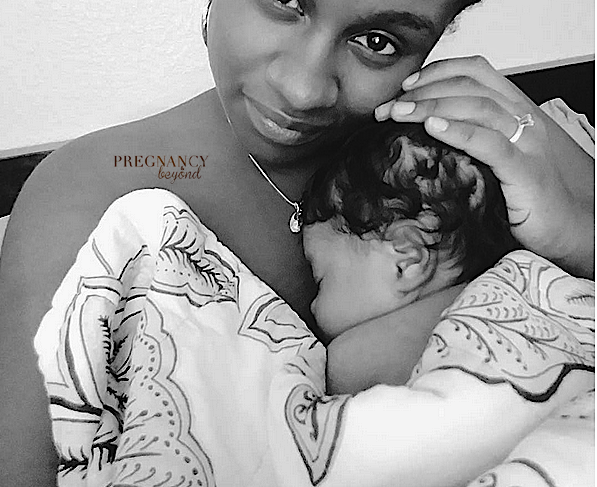
Get Breastfeeding Off To A Good Start:
Helping To Get Breastfeeding Off To A Good Start: Milk Supply, By Rita Brhel, Hastings, Nebraska (La Leche League USA)
 After years of supporting mothers at all stages of breastfeeding, I’ve learned that there are four key areas to focus on when helping mothers get breastfeeding off to a good start: milk supply, latch, frequent access to the breast, and skin-to-skin contact. In this post, let’s begin by exploring milk supply.
After years of supporting mothers at all stages of breastfeeding, I’ve learned that there are four key areas to focus on when helping mothers get breastfeeding off to a good start: milk supply, latch, frequent access to the breast, and skin-to-skin contact. In this post, let’s begin by exploring milk supply.
A common concern among new mothers is whether or not they produce enough milk to satisfy their babies. A satisfied baby will come off the breast on his own without fussing and without giving you hunger cues. He may fall asleep at the breast, but won’t look for the breast almost right away when he wakes up.
Newborn babies do need to feed frequently, but if your baby is breastfeeding nearly constantly—for example, you only have a few minutes between the end of one feed and the beginning of another, and this lasts all day long—you may want to speak with a La Leche League Leader or other lactation support person.
It’s difficult to say how often your baby will need to breastfeed. At the hospital, you may hear that baby needs to feed every two or three hours. This guideline is more so a mother doesn’t go over three hours without feeding, for example, if she’s missing baby’s hunger cues or if baby is sleepy from having jaundice.
La Leche League encourages mothers to breastfeed on demand, meaning whenever baby is showing pre-cry hunger cues: sucking on fingers or fists, just having the hands in fists, wiggling, pursing lips, sticking the tongue out of the mouth, turning toward the breast, even moving the eyes under the eyelids in that last phase of light sleep.
READ: Nine Labor & Delivery Nurses Are Pregnant At The Same Time
Crying is baby’s last resort, and waiting until your baby cries is not recommended as your baby will be much harder to latch and settle because of being so frustrated. In this case, a baby often falls asleep early in the feeding because crying takes so much energy. If your baby is easily frustrated, watch for baby’s earliest hunger cues and latch at that point.
Let’s go back to how often a newborn will breastfeed. It could be every two or three hours. Or it could be every hour. There is no set standard among babies, because all babies are unique individuals. Trust that babies instinctively know when they are hungry. Don’t hesitate to breastfeed them at that point.
(A caveat here is if your baby has a reason for needing close medical monitoring, such as jaundice, born prematurely, or another reason identified by his health care provider or your lactation consultant. These babies may need to be awakened before they show hunger cues in order to stimulate their feeding instincts.)
Have you experienced low supply before? Barring any hormonal medical conditions or uncommon breast tissue complications, your potential for having a full milk supply resets with every pregnancy. So, if you want a sufficient milk supply over the course of your breastfeeding relationship, begin by establishing your milk supply in the early weeks.
After all that, how does this relate to having a good milk supply? The newborn weeks are when you will be establishing your milk supply, and the best way to do that is by breastfeeding frequently. How much milk you make depends on how much and how frequently milk is being removed. So, to make more milk, you need to breastfeed more often. This will help to ensure that you get breastfeeding off to a good start!
Photo Credit : Taratoriola
This article is by La Leche League USA
The mission of La Leche League USA is to help mothers to breastfeed through mother-to-mother support, encouragement, information, and education, and to promote a better understanding of breastfeeding as an important element in the healthy development of the baby and mother.
Follow Pregnancy & Beyond on Instagram, Facebook and Twitter




